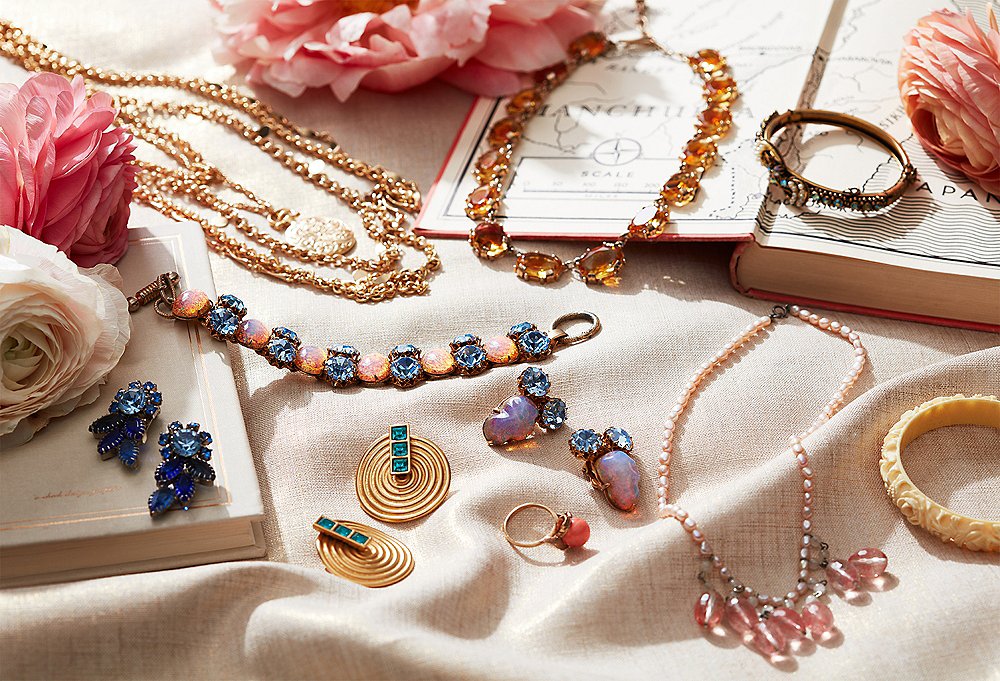So, you’ve got some vintage jewelry that’s been sitting in your drawer, and you’re thinking it’s time to part ways. Maybe it’s a beautiful brooch from your grandmother or a ring that just isn’t your style anymore. Whatever the reason, selling your vintage jewelry can be a bit like dating—you want to find the right match to get the best outcome.
Understand What You Have
Before you dive into selling, it’s essential to understand exactly what you’re holding. Are they valuable vintage pieces, or more sentimental items with less market value? A jewelry appraisal can help you figure this out. Look for a certified appraiser, ideally someone with credentials from the Gemological Institute of America (GIA). This step ensures you know the worth of your jewelry, which is the first key to getting a fair deal.
Knowing the specifics—like the era, maker, and materials—can also help. For example, a ring from the Art Deco period might have a different value compared to a Victorian piece. If you have documentation or original receipts, gather those too. They can provide valuable information and increase your item’s value.
Where to Sell: Choosing the Right Buyer
When it comes to selling your vintage jewelry, there are several avenues you can take. Each has its pros and cons, so let’s break it down:
- Jewelry Buyers and Estate Jewelry Buyers:
- These people specialize in buying jewelry and often have a keen eye for vintage pieces. They’re usually found through online searches or by checking with the National Pawnbrokers Association.
- They tend to offer competitive prices but do your homework and read reviews to find reputable buyers.
- Pawn Shops and Cash for Gold Stores:
- While convenient, pawn shops and cash-for-gold stores might not always give you the best price. However, they’re a quick option if you need cash fast.
- Searching for “pawn shops near me” can yield local options, but remember, they might prioritize speed over value.
- Online Jewelry Buyers:
- There are numerous online platforms where you can sell your vintage jewelry. Websites dedicated to buying jewelry can offer good prices, and the process is often straightforward.
- Ensure the buyer has a solid return policy and read their reviews to avoid any mishaps.
- Online Vintage Jewelry Marketplaces:
- Sites like Etsy or eBay allow you to reach a broader audience. While it might take longer to sell, you could potentially get a better price.
- Be prepared to handle shipping and customer service yourself.
Tips for a Smooth Selling Process
- Get Multiple Quotes:
- Don’t settle for the first offer you get. Approach several buyers and compare their offers. This helps ensure you’re getting a fair price.
- Be Honest About the Condition:
- Transparency about any damage or wear on your jewelry can build trust with potential buyers and avoid disputes later.
- Understand the Buyer’s Process:
- Different buyers have different processes. Some might require an in-person meeting, while others handle everything online. Make sure you’re comfortable with their process.
- Keep Records:
- Document everything, from the appraisal to communication with buyers. This can help if any issues arise.
Common Pitfalls to Avoid
- Ignoring the Appraisal:
- Skipping the appraisal might save time and money upfront, but it can cost you in the long run. An accurate appraisal is your best defense against lowball offers.
- Falling for Scams:
- Unfortunately, not every buyer out there is legitimate. Watch out for red flags like high-pressure tactics, vague answers, and requests for personal information.
- Undervaluing Sentimental Pieces:
- Sometimes, the emotional value of a piece might be worth more than the market value. If you’re unsure, take some time to think before selling items that hold significant sentimental value.
Understanding Market Trends
Market trends can significantly impact the price you get for your vintage jewelry. Keeping an eye on these trends can give you an edge:
- Seasonal Trends: Jewelry prices can fluctuate throughout the year. For example, demand might be higher during wedding season or around the holidays.
- Economic Conditions: The broader economic climate can also influence prices. During economic downturns, people might be less willing to spend on luxury items, affecting the prices you can get.
- Fashion Trends: Styles come and go. If a particular style is currently in vogue, you might fetch a higher price for pieces that match the trend.
Negotiating the Sale
Negotiation is a part of the selling process. Here are some tips to help you get the best deal:
- Start High: When negotiating, it’s often wise to start with a higher price than what you’re willing to accept. This gives you room to negotiate down to your target price.
- Stay Calm and Polite: Even if the buyer tries to lowball you, keep your cool. A polite and professional demeanor can go a long way in negotiations.
- Know Your Bottom Line: Have a clear idea of the lowest price you’re willing to accept and stick to it. If the buyer can’t meet your price, be prepared to walk away.
Final Thoughts
Selling your vintage jewelry doesn’t have to be daunting. With a bit of research and preparation, you can find the right buyer and get a fair price. Remember, it’s not just about making money—it’s about ensuring your treasured pieces find a new home where they’ll be appreciated.
Whether you go with a specialized jewelry buyer, a pawn shop, or an online marketplace, the key is to stay informed and patient. So, take a deep breath, do your homework, and start your journey to finding the perfect buyer for your vintage jewelry.
Stay in touch to get more updates & news on Vents Fashion!

